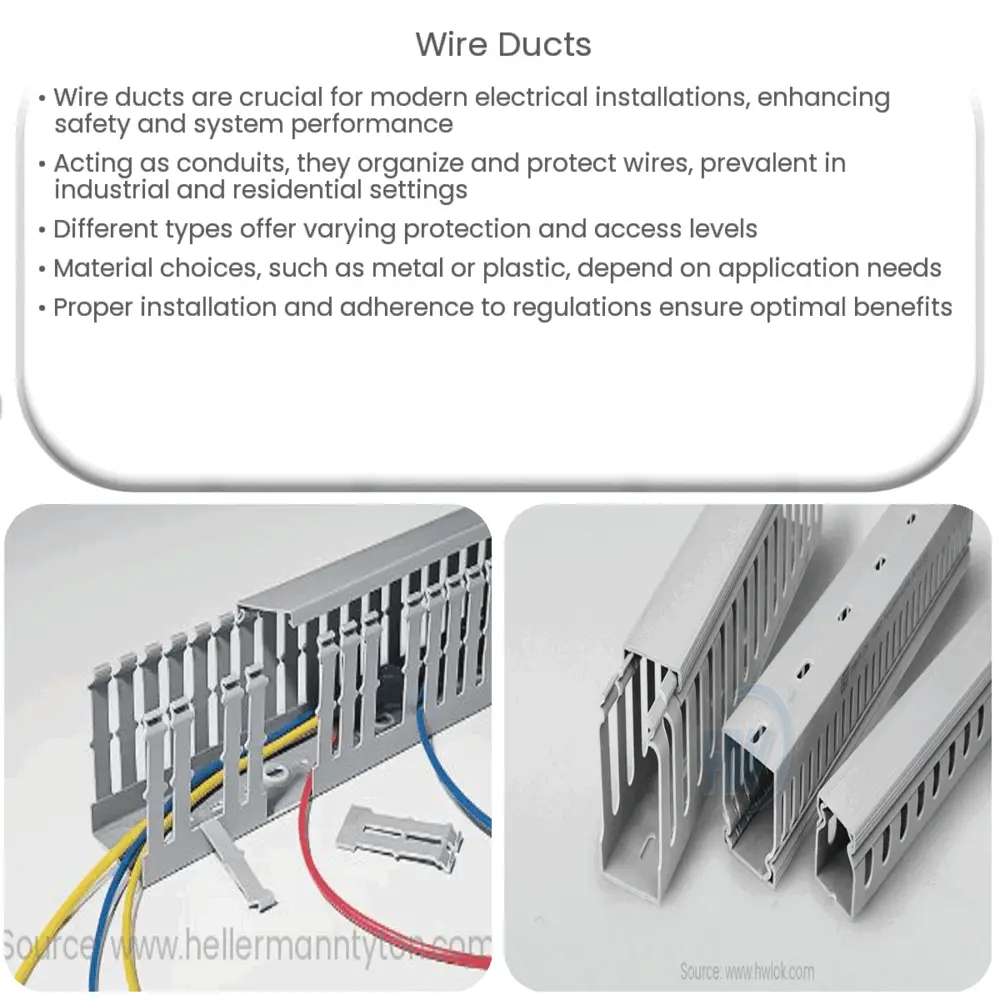Explore the world of wire ducts, their types, advantages, and factors to consider when choosing them. Learn about their installation, maintenance, and regulations.

Understanding Wire Ducts
Wire ducts are an essential part of modern electrical and network installations, significantly impacting the safety, performance, and maintenance aspects of a system. But, what exactly are wire ducts, and what benefits do they offer? Let’s delve in to learn more about this vital technology.
Defining Wire Ducts
A wire duct, often also referred to as a cable duct, is a conduit or a pathway that facilitates the organization, protection, and routing of wires and cables within a given setup. It’s a form of cable management system commonly utilized in various applications including but not limited to industrial settings, data centers, commercial spaces, and residential buildings.
Types of Wire Ducts
- Solid Wall Wire Ducts: These ducts are fully enclosed, providing maximum protection for wires against physical damage, dust, and moisture. They’re typically utilized in harsh environments where the wiring needs an extra layer of security.
- Slotted Wall Wire Ducts: These ducts, as their name suggests, feature slots or openings along their length. The design allows for easier access to the cables, making it the preferred choice for setups where frequent cable adjustments or inspections may be required.
- Narrow Slot Wire Ducts: These are a variant of the slotted wall ducts, but with narrower slots, facilitating better retention of wires and improved aesthetics, especially in settings where visual neatness matters.
Material Choices in Wire Ducts
Wire ducts can be made from a variety of materials. These include metal, such as steel and aluminum, and a variety of plastics, such as PVC, polyethylene, and polypropylene. The choice of material typically depends on the application’s needs and the specific requirements related to durability, flexibility, and environmental resistance. For instance, metallic wire ducts are preferred in industrial environments due to their superior strength and heat resistance, while plastic ducts are often chosen for their flexibility and cost-effectiveness in less demanding settings.
Advantages of Wire Ducts
Wire ducts bring several advantages to a wiring installation, regardless of its scale or complexity. Some of these advantages are:
- Safety: By properly housing and securing the wires, ducts minimize the risk of electrical accidents caused by wire exposure or damage.
- Organization: Ducts help in keeping the cables organized, which is crucial in setups with a high density of wiring, such as data centers.
- Maintenance and Troubleshooting: Thanks to the organization and accessibility provided by ducts, the process of troubleshooting or maintenance becomes significantly simplified.
Considerations When Choosing Wire Ducts
While the advantages of wire ducts are clear, it’s essential to consider several factors to make an optimal choice. These factors include:
- Size: The size of the wire duct must be adequate to comfortably house all the wires without overcrowding, which could lead to overheating or damage.
- Material: As mentioned earlier, the material of the duct should suit the application’s demands in terms of durability, flexibility, and resistance to environmental factors.
- Location: Depending on whether the duct will be installed indoors or outdoors, considerations such as UV resistance or weatherproofing may come into play.
- Type: The type of duct (solid, slotted, or narrow slot) should align with the needs of the wiring setup, particularly in terms of accessibility and protection.
Installation and Maintenance of Wire Ducts
Proper installation and maintenance of wire ducts are equally important to ensure their effective functioning. The ducts should be installed in a manner that allows easy access for maintenance or cable additions. Regular checks should be made for any signs of damage, and any damaged ducts should be promptly replaced to maintain the safety and integrity of the entire wiring system.
Regulations and Standards
Lastly, it’s essential to keep in mind that wire duct installations are often subject to local and international regulations and standards. These rules ensure safety and compatibility in wiring systems. Some of these standards include the National Electrical Code (NEC) in the United States, the International Electrotechnical Commission (IEC) standards globally, and region-specific codes. Compliance with these standards is crucial and should always be ensured.
Conclusion
In conclusion, wire ducts play a pivotal role in maintaining the safety, integrity, and efficiency of a wiring system. They offer protection, organization, and simplified maintenance to varying degrees, based on their design, material, and type. However, the key to harnessing these benefits lies in making the right choice of duct and adhering to proper installation and maintenance practices. Lastly, ensuring compliance with the applicable standards and regulations will guarantee the durability and safety of your wiring setup, contributing to a reliable and robust system.

